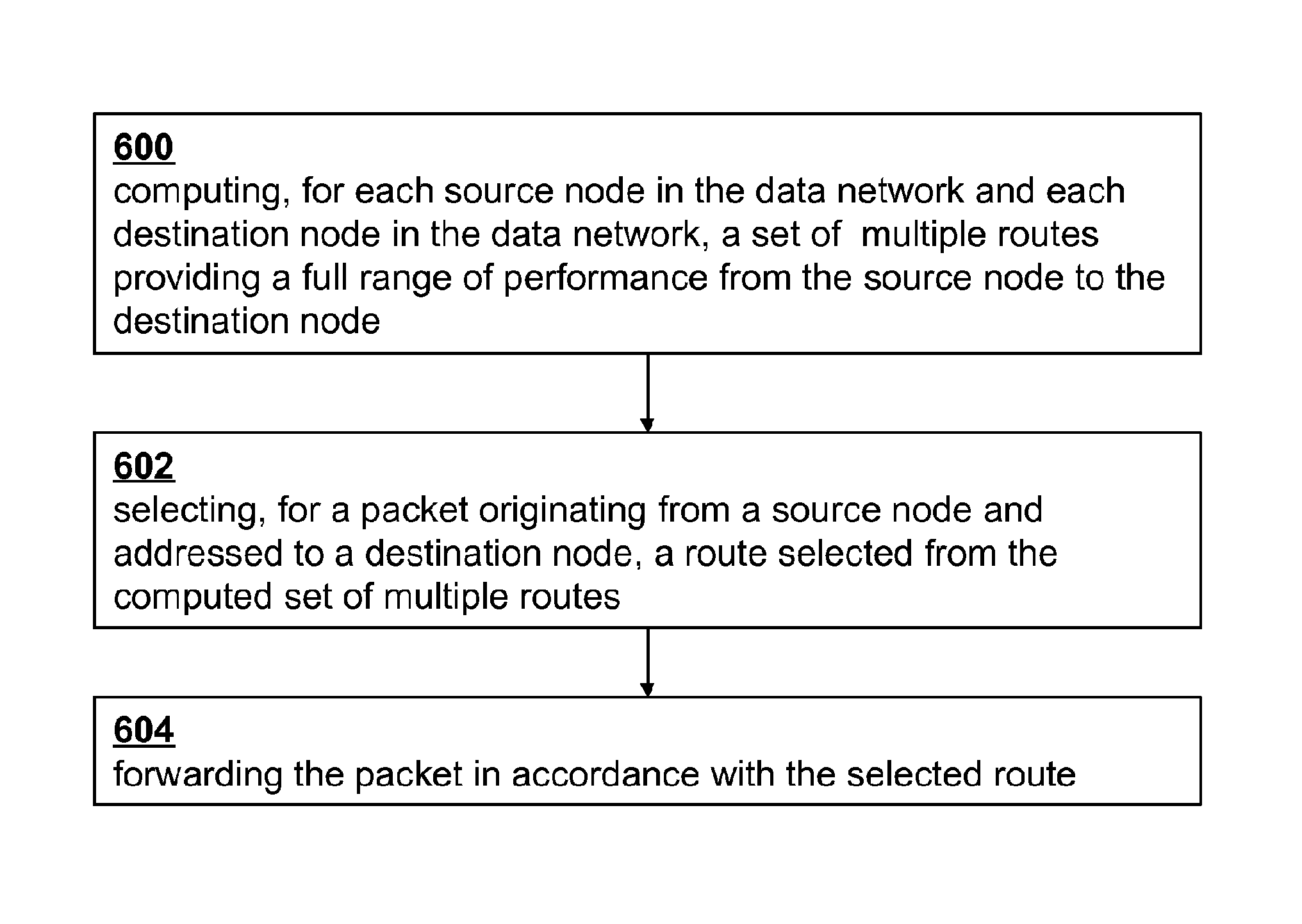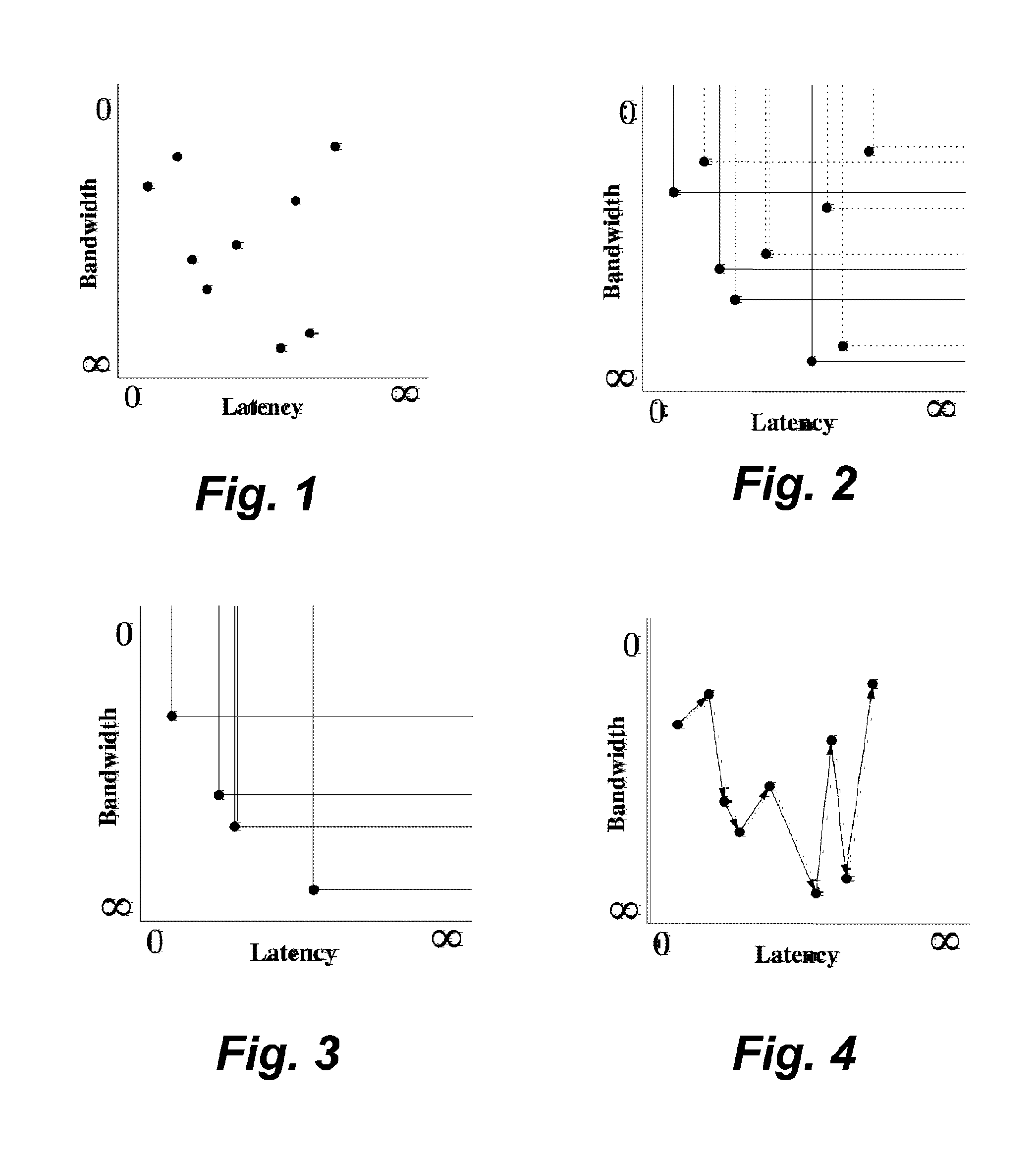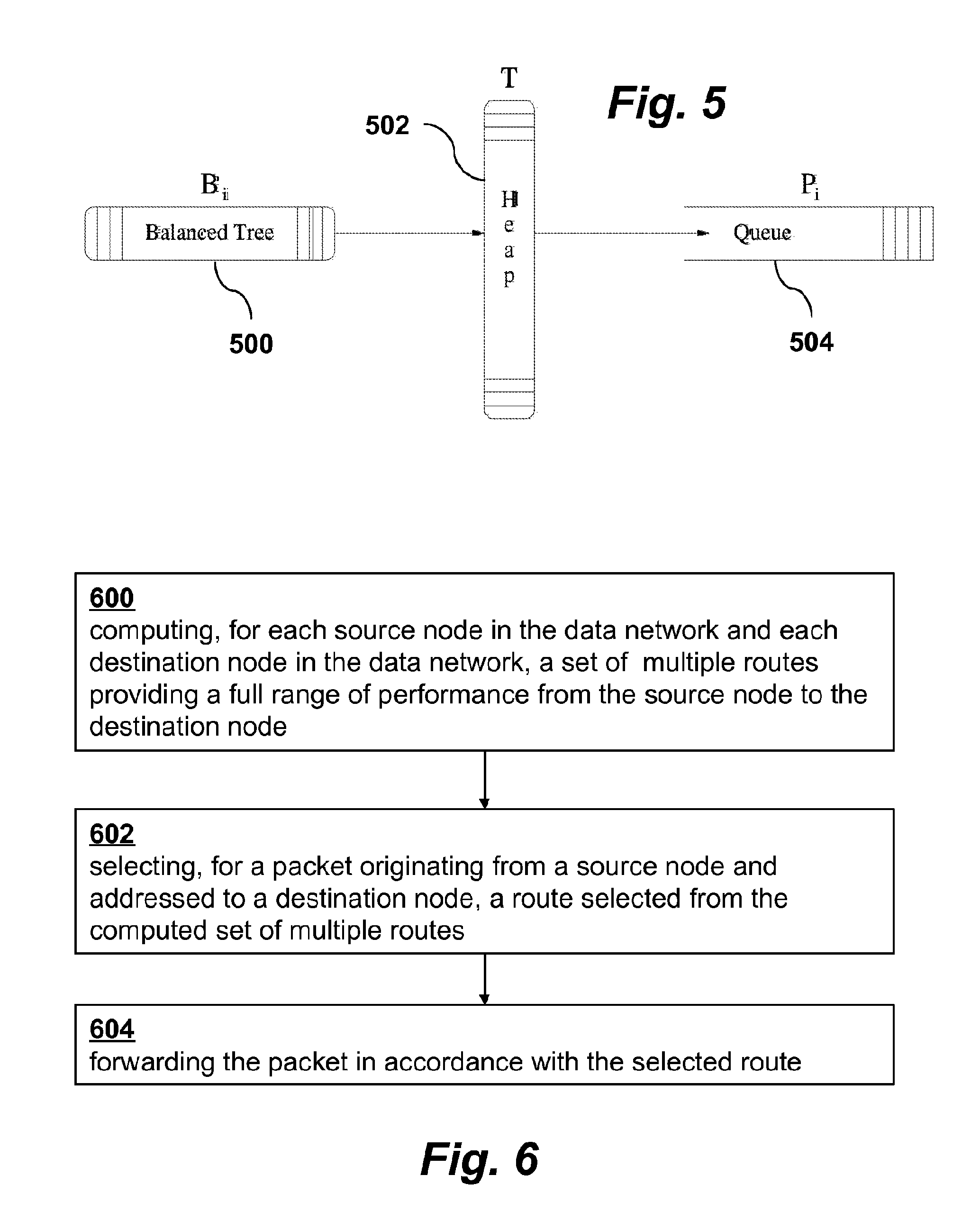Comprehensive multipath routing for congestion and quality-of-service in communication networks
a multi-path routing and communication network technology, applied in the field of data communication network routing solutions, can solve the problems of insufficient bandwidth, insufficient bandwidth, and inability to meet the needs of internet-based systems, and achieve the effect of reducing overhead costs and efficiency
- Summary
- Abstract
- Description
- Claims
- Application Information
AI Technical Summary
Benefits of technology
Problems solved by technology
Method used
Image
Examples
Embodiment Construction
[0047]A key aspect of the present invention is the representation of multiple distinct route performance metrics as points in a multi-dimensional space, such that the routes can be organized using a partial ordering of the points. The term “partial order” is defined herein in accordance with its standard mathematical definition, i.e., a partial order on a set R is a relation that is reflexive, anti-symmetric, and transitive. A partial order is distinguished from the familiar notion of a linear order (or total order). For example, the relation “≦” (less than or equal) defines a linear order on the set of real numbers. This linear order has the property that, given two numbers a and b, it is always the case that a≦b or b≦a. With a partial order, however, this property (called comparability) is not in general satisfied for any two elements. Moreover, whereas a finite set has just one unique linear order, it can have multiple distinct partial orderings. In the case of the present invent...
PUM
 Login to View More
Login to View More Abstract
Description
Claims
Application Information
 Login to View More
Login to View More - R&D
- Intellectual Property
- Life Sciences
- Materials
- Tech Scout
- Unparalleled Data Quality
- Higher Quality Content
- 60% Fewer Hallucinations
Browse by: Latest US Patents, China's latest patents, Technical Efficacy Thesaurus, Application Domain, Technology Topic, Popular Technical Reports.
© 2025 PatSnap. All rights reserved.Legal|Privacy policy|Modern Slavery Act Transparency Statement|Sitemap|About US| Contact US: help@patsnap.com



